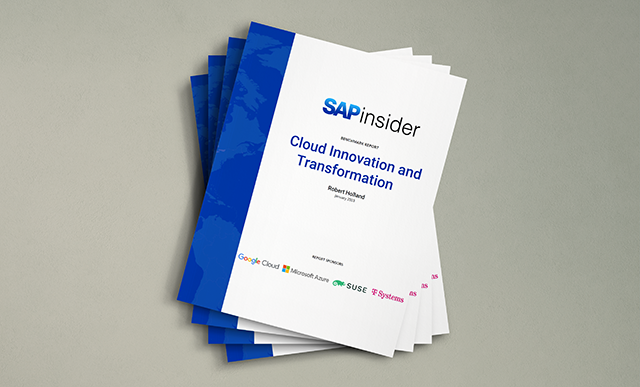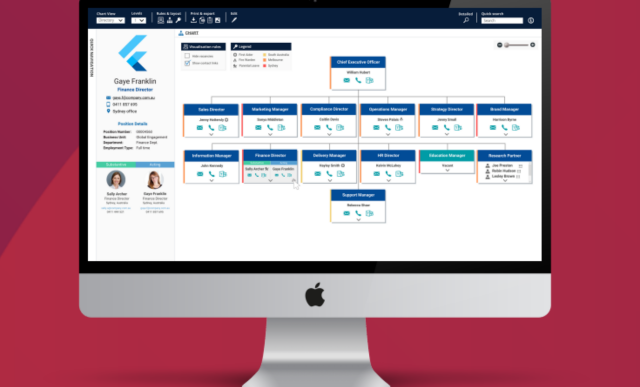SAP Announces Jennifer Morgan’s Departure, Official Q1 Numbers
Financial Results Unchanged from Pre-Release Numbers
By Robert Holland, VP Research and Publishing, SAPinsider
On April 20, SAP announced that co-CEO Jennifer Morgan would be leaving the company effective April 30 and that Christian Klein would continue as the sole CEO of the organization. The official line stated by Klein in the April 21 earnings call, echoing almost identical wording in the earlier press release, was that “More than ever, the current environment requires quick and determined action from companies and it needs a very clear leadership structure. Jen realized that our leadership model was not the best fit for these times and mutually agreed with the Supervisory Board that she will depart the company effective April 30 and that we will switch to a sole CEO model.”
Klein went on to thank Morgan for her contributions to SAP and stated that “we would not be where we are today without her.” Klein made sure to point out that as Morgan leaves SAP “she does so with the respect and heartfelt appreciation of her board colleagues, our customers, partners, and the entire SAP family. I know that SAP will always have a true champion in Jen whatever she decides to do next.”
No further mention of Morgan’s departure was made on the earnings call, though a question from an analyst at UBS did ask specifically about Morgan’s role since her board area was cloud focused, and whether new Executive Board members might be appointed. Klein avoided answering the question directly and talked about winning LoBs, that SAP was a strong ERP company, and how ERP is more relevant than ever with disrupted supply chains and lockdowns. Klein did mention when talking about board appointments that “there will be news coming, but please have a little patience with us in this area,” especially since SAP will be replacing their Chief People Officer.
Combined with the departure of Michael Kleinemeier, who will also leave SAP on April 30, and Stefan Reis, who will depart at the end of May, this change reduces the SAP Executive Board to just five members of whom only Adaire Fox-Martin has any significant sales background. This will also be the first time in at least 12 years that SAP will not have a member based in the U.S.—their largest market—on their Executive Board. Following April 30 all current Executive Board members will be based in Germany. When Reis departs at the end of May, he will be the sixth member of the Executive Board to depart SAP in the last 14 months, preceded by Bernd Leukert in February 2019, Rob Enslin in April 2019, Bill McDermott in October 2019, and Morgan and Kleinemeier in April 2020.
While Klein’s statement during the earnings call, and a similar statement sent to employees by Chairman of the Supervisory Board Hasso Platter, indicated that the current environment is not the right time for a co-CEO structure, it is unclear what confusion having a co-CEO structure was causing. Klein stated on the earnings call that over 95% of SAP’s employees were successfully working virtually. Due to restrictions placed by the German government, board members based in Germany are also meeting virtually. It is a challenge that all levels of the organization are facing.
SAP has a history of having co-CEOs, with Bill McDermott and Jim Hagemann Snabe successfully sharing the role from 2010 to 2014. Plattner himself also served as co-CEO alongside Henning Kagerman from 1998 until 2003. Morgan’s abrupt departure is unusual, especially considering that when Hagemann Snabe stepped down from his position as co-CEO it was announced six months ahead of the change occurring. Morgan had only been in the role for six months.
Financial Results
While the media is focused on the departure of Jennifer Morgan, SAP’s focus on the quarterly earnings call was their financial results. As stated in the pre-release data, SAP saw an increase in IFRS cloud revenue by 29% year over year, a 7% increase in cloud and software revenue as well as total revenue year over year, with IFRS operating profit remaining unchanged at €1.21 billion, despite the COVID-19 crisis impacting numbers in the last month of the quarter. A significant point for SAP was that more predictable revenue represented 76% of total revenue in the first quarter. (Predictable revenue is the total of non-IFRS cloud revenue and non-IFRS software support revenue.)
Klein also emphasized SAP’s customer focus during the call, at one point saying that “our over 400,000 customers worldwide make the world run.” And in addressing a question on how sales operations might change in the post-lockdown world, Fox-Martin talked about the changes SAP has already made at the board level to create her Customer Success board area which contains the customer facing resources focused on sales, support, and consulting. These changes continue the customer emphasis for SAP.
One point that Klein hit on multiple times during the call was that there were 500 go-lives of SAP S/4HANA during the quarter. In the documentation accompanying the earnings call SAP included a chart showing SAP S/4HANA customer count since 2017, and this shows a growth of approximately 300 SAP S/4HANA customers over the same time period. These numbers align with what SAPinsider has been seeing in our survey results, which reflects a steady growth of SAP S/4HANA customers and implementations. While Klein said during the call that the impact of COVID-19 has caused the postponement of some customer implementations, particularly those which were planned to be on-premise, SAP has also seen a shift to more SAP S/4HANA Cloud implementations as these can be conducted remotely. If this shift continues beyond the short term it will be a positive trend for SAP as it contributes to their predictable revenue total.
SAP has also continued to drive operational profitability by shifting many of its cloud-based solutions to the HANA platform instead of third-party databases. This was completed earlier in 2019 for SAP SuccessFactors and is soon to be completed for SAP Ariba. Moving these solutions to SAP HANA has resulted in a significant benefit for SAP and they expect at least another point increase in overall profitability based on the moves.
The biggest impact to financial results in 2020 will be the COVID-19 crisis. SAP saw a significant drop in revenue in the last month of the quarter, though Fox-Martin indicated that in the very last days of Q1 there were positive signs in China. SAP will be looking for trends from markets in China, South Korea, and similar geographies in Q2 to help predict the impact on their other markets later in the year. Currently, SAP expects a significant drop in business in Q2, with a gradual improvement in Q3 and Q4.
What Does This Mean for the SAPinsider Community?
SAP has seen considerable change in leadership over the past year, and with a replacement likely for at least the Chief People Officer position those changes will continue further into 2020. In addition, SAP is seeing the impact of the COVID-19 crisis on its plans for 2020. Here are steps that you can take to help your organization:
- Continue to demand the best from SAP. A point that came up multiple times during the earnings call was that SAP wants to work with its customers and provide the best service at all levels. While the COVID-19 crisis has impacted organizations across the globe, SAP indicated that they are addressing customer concerns on a case-by-case basis with a focus on overall customer success. Push SAP to deliver what they are promising.
- Prepare for further leadership changes. Even though SAP needs to stabilize its executive leadership and customer confidence after Morgan’s abrupt departure, expect to see changes later in 2020 as they replace board members like Stefan Reis and potentially make other additions to the Executive Board.
- Plan for further impacts in Q2 before gradual improvements later in 2020. SAP has predicted a significant impact on revenue in the second quarter before seeing gradual improvements in the second half of 2020. SAP also hopes positive indications in China at the very end of March will be a good prediction for the remainder of the year.
- Learn how others are handling the crisis. As this crisis impacts organizations across the globe, the most important thing is understanding how other organizations are handling the situation. A great way to connect with your colleagues it to attend SAPinsider’s virtual events coming in May. With over 400,000 members from over 52,000 companies, the SAPinsider Community represents the largest collection of SAP customers and brings an unparalleled opportunity to learn and engage.
Following this guidance should help the SAPinsider Community make appropriate decisions around their 2020 plans and the impact of the COVID-19 crisis.
Robert Holland, Vice President of Research & Publishing, SAPinsider, can be reached at robert.holland@wispubs.com.



![Chris Lawton, Unsplash [image of changing leaves]](https://sapinsider.org/wp-content/uploads/2024/02/chris-lawton-5IHz5WhosQE-unsplash.jpg)

